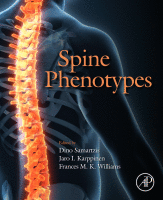Physical Address
304 North Cardinal St.
Dorchester Center, MA 02124

Key points The process of intervertebral disc (IVD) degeneration consists of gradual structural and biochemical changes that may lead to pain and disability. IVD degeneration is multifaceted, mediated by biomechanical alterations, nutritional compromise, genetics, and environmental factors among others Various…

Key points Various imaging modalities exist to assess the intervertebral disc. Classification grading schemes have been proposed to assess the morphological and structural changes of the disc. Novel or nontraditional imaging platforms have been developed to assess early disc changes,…

Key points Animal models are critical for understanding disease mechanisms and developing new therapies. Species differences in intervertebral disc size, tissue composition, and cellular content associate with distinct biomechanical and biological behaviors. Some features of human disc degeneration are mimicked…

Key points Intervertebral disc (IVD) degeneration involves endplate-driven and annulus-driven phenotypes that accumulate and interact with progressive degeneration and eventual collapse of the IVD. IVD injuries result in organ-level changes that affect cellular level responses and organ level biomechanical behaviors,…

Key points The spine protects the spinal cord and provides mechanical strength to the trunk while allowing for a certain amount of flexibility. The intervertebral disc has a design and structure highly optimized to fulfill its mechanical requirements, that is,…

Key points Intimate relationships between osseous, nervous, vascular, and soft tissue structures of the spine are critical to normal function. A thorough understanding of these relationships is essential to the comprehension of spinal pathology and its surgical management as well…